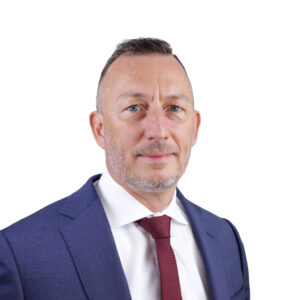
While environmental issues are foremost among private clients’ sustainability concerns, corporate behaviour and social responsibility are also gaining traction.
Heatwaves, wildfires and floods hit North America, Europe, and Asia during the record-breaking summer of 2023, ushering in a new era of global warming. These adverse weather events have further raised wealth holders’ awareness of the world’s sustainability challenges, boosting their desire to invest sustainably and leaving a legacy for future generations.
“Clients are discovering they feel empowered by their wealth,” which is now much more than a set of numbers in “an end-of-year report”, says Rosa Sangiorgio, Pictet Wealth Management’s head of responsible investing. “It is becoming a way for them to contribute to the real economy and the society their grandchildren will be living in.”
At the start of this year, around two-thirds of chief investment officers (CIOs) and market strategists expected client demand for sustainable investing to grow in 2023, according to PWM’s eighth annual Global Asset Tracker. Around 50 per cent predicted 10 per cent or more of their client assets would generate a positive impact on the environment and/or society by the end of next year. The study surveyed 51 private banks managing a combined $18tn in client assets.
While the climate crisis and other environmental aspects top private clients’ concerns, corporate behaviour and social responsibility are also coming under scrutiny. The social consequences of the Covid-19 pandemic, together with the cost of living crisis, are striking a chord with wealth holders, frustrated by lack of progress in meeting the United Nation’s Sustainable Development Goals (SDGs).
Irrespective of portfolio size, there is growing interest in sustainable investments from both consumers and institutional investors. There is also demand for “more transparency and accountability from companies”, confirms Catharina Belfrage Sahlstrand, Handelsbanken’s group head of sustainability and climate action, who is speaking at the upcoming FT/PWM Wealth Management Summit in London. “Customers have growing expectations when monitoring developments in their portfolios. This comes from both a financial and a sustainable perspective.”

Rising awareness of sustainable investing is fuelled by a huge wealth transfer to the next new cohort of environmentally and socially conscious business leaders and wealth owners.
“It is heartening to see our next generation of wealth leaders values stewardship of their business and capital as part of their family legacy,” observes Jean Chia, Bank of Singapore’s CIO, who will also be speaking at the summit.
Wealthy investors’ more proactive attitude is evident in their favoured sustainable investing approaches.
With roots in ethical investing, based on excluding 'sin' stocks, the bulk of sustainable assets are still mostly based on the exclusionary approach, with concern about the climate crisis cited as the most common reason for financial groups to remove firms from portfolios. But clients are less interested in which companies are excluded from their portfolios, and keener to invest in “solutions to the problem”, says Pictet’s Ms Sangiorgio.
Supporting sustainability journeys
Solutions involve supporting companies in their sustainability journey through engagement and voting. Energy firms looking to popularise renewables and companies financing regenerative agriculture are also part of this story.
Recent geopolitical events have accelerated this change of investors’ perspective, bringing the meaning of governance into focus. This has prompted a fierce debate about whether excluding companies or whole countries under authoritarian regimes is about financial returns, or ethics and reputation.

Gas price surges, related to Russia’s invasion of Ukraine in February 2022, triggered a focus on energy security, bringing “the right nuance into sustainable investing”, states Harlin Singh, global head of sustainable investing at Citi Global Wealth.
“The energy crisis has made people realise the importance of financing the transition to new forms of cleaner, more sustainable energy sources, but in an orderly way, addressing the climate crisis without hurting vulnerable, energy insecure populations,” she says, adding that systematically excluding oil and gas exposure badly hit investors' portfolios but did not help reduce emissions.
Last year, underperformance of ESG (environmental, social and governance) funds was linked to underweight positions in energy and mining stocks – which enjoyed stellar returns – and overexposure to growth stocks, such as tech, hit by rising interest rates to combat inflation.
There is also an attempt to rehabilitate the ‘dirty’ mining industry from a sustainability perspective. While fraught with environmental and social concerns, the sector is critical to energy transition, as electrification will significantly increase demand for minerals. This means wealth managers need to adapt their approach to minerals and mining stocks, with investors’ focus shifting to ‘best practice’ firms.
The concept of ‘bad stocks’ has become more fluid, with defence stocks back in play, as wars bring geopolitical risks to the forefront.
There is still, however, “a strong rationale” for exclusions as a tool within a sustainable investment approach, as “a hygiene factor”, believes Daniel Wild, chief sustainability officer at Bank J. Safra Sarasin. This can be applied to companies such as weapons manufacturers, when engagement does not lead to fundamental change in business practices.
“Excluding these companies can help clients align portfolios with individual values and beliefs,” he says. Divestment should be the “last resort” if engagement or stewardship approaches, more impactful over the long-term in the listed securities space, are unsuccessful.
Mr Wild also believes it is necessary to give sustainable investing a “more positive spin”. Asset managers, he says, should place a stronger focus on future investment opportunities explaining to clients how they can benefit from the global transition to a more sustainable or net-zero world.
ESG dilemma
Sustainability is a complex, multi-faceted issue. Recent atrocities committed by Hamas, the Palestinian Islamist militant movement, against Israel, are likely to bring a renewed supply shock for global energy markets. This is expected to re-ignite the debate between energy security versus the environment, the ‘S’ versus ‘E’ within the ESG framework.
This dilemma is intrinsic to rapid economic growth of emerging markets. India, for instance, has reduced poverty in recent decades, while increasing greenhouse gas emissions from energy consumption.
Complying with European regulation, including the Markets in Financial Instruments Directive (MiFID) II, can also prove a headache. Wealth managers are faced with different sustainability approaches employed by asset managers, and “end up grouping apples and pears” as they strive to meet client requirements for specific percentages of sustainable investments in portfolios.
“The financial industry and regulators are trying to simplify the concept, both for consumers and investors, but through this simplification, we lose information,” says Pictet’s Ms Sangiorgio. This means banks end up having to do much more work with clients, assuring them that sustainable investments are linked to more resilient and performing portfolios in the long term. These deeper conversations about sustainability are crucial in engaging younger generations, she says.
This shift will not happen overnight. Most wealthy clients are interested in sustainable investing, driven by desire to mitigate risk, take advantage of innovation-linked investment opportunities, and generate impact to complement philanthropic activities, says Citi’s Ms Singh. But “dollars are slow to move” into sustainable investments, with “huge growth” so far driven by institutional capital.
Ultra-high net worth (UHNW) individuals and billionaire family offices, which are typical Citi clients, have “the interest, the capital and the patience” to invest sustainably and have started to make that progress. Many private clients, though, are long-standing investors, and advisers cannot “divest clients out of everything they hold and flip portfolios just to have an ESG mandate,” says Ms Singh.
This would generate significant taxable gains in their portfolio, for instance. “Ultimately, as fiduciary wealth advisers, we need to think about sustainable investing in the context of clients’ existing portfolios, their risk tolerance and liquidity needs and make sure their goals are being met,” she says.
Defining sustainable investing
Many UHNW families are still in the process of defining what sustainable investing means to them, which areas to focus on and how it complements traditional approaches. “Historically, there was a mindset of ‘this is my philanthropy, this is my investment and this is my consumption, and never shall these three meet’,” says Ms Singh.
But these capital and impact silos are now being broken down. “This is necessary for an ecosystem shift in how we operate. It's becoming almost an asset allocation of impact, which is very promising.”
For sustainable investments to become mainstream, there are hurdles to overcome, including widespread misconception about a trade-off between sustainability and returns. Greater evidence that sustainable and impact strategies do not underperform traditional investing is the most important factor which will drive growth in client portfolios, according to PWM’s research.
“There is no conflict with some of the tenets of quality investing, which identifies companies able to generate long-term return through robust business models. That is also the essence of sustainable investing,” explains Bank of Singapore’s Ms Chia.
This view is part of a growing investment school that believes greater data transparency and availability will lead to the disappearances of the ESG investment concept. It will simply become normal investing.
Most importantly, private clients must be able to trust their “portfolio managers deliver on investment mandates based on what’s written on the tin”, says Ms Chia. “A rigorous investment process, risk monitoring and governance are important foundations to build this trust,” she says, explaining that in Asia, ESG-related and impact assets are still seen as “a satellite or thematic style of investment” rather than mainstream.
Greenwashing remains a thorny issue, forcing the industry to sharpen definitions and seek greater clarity on what constitutes truly sustainable practices. “Different sectors, industries and even individual companies face unique challenges and opportunities on their sustainability journeys. A multi-faceted understanding of sustainability is therefore not only desirable, but necessary for meaningful progress,” says Bank J. Safra Sarasin’s Mr Wild.
Pictet’s Ms Sangiorgio believes there is “too much emphasis” on this topic, rather than prioritising the “direction of travel”. Decades ago, corporates overstated how green they were, raising investors’ expectations, which they had to meet eventually. Today, the trend is toward ‘green hushing’, with corporates implementing changes towards sustainability but not making them public, to avoid drawing scrutiny.
“This gets into the way of collaborating and sharing, hearing about best practices, failing, and then improving,” she says. “If we do not allow failure, how can we learn the lesson?”
There is widespread industry agreement that regulation around sustainable investments is moving in the right direction, coupled with increased dialogue and collaboration between different players.
“Regulations are essential, and we need to work together,” says Ms Sangiorgio. “But we also need to remind ourselves that it's a journey. We need to be allowed to experiment.” Otherwise, there is a danger that rigidity and inflexibility may kill creativity and innovation in what is currently one of the most exciting areas in wealth management.






